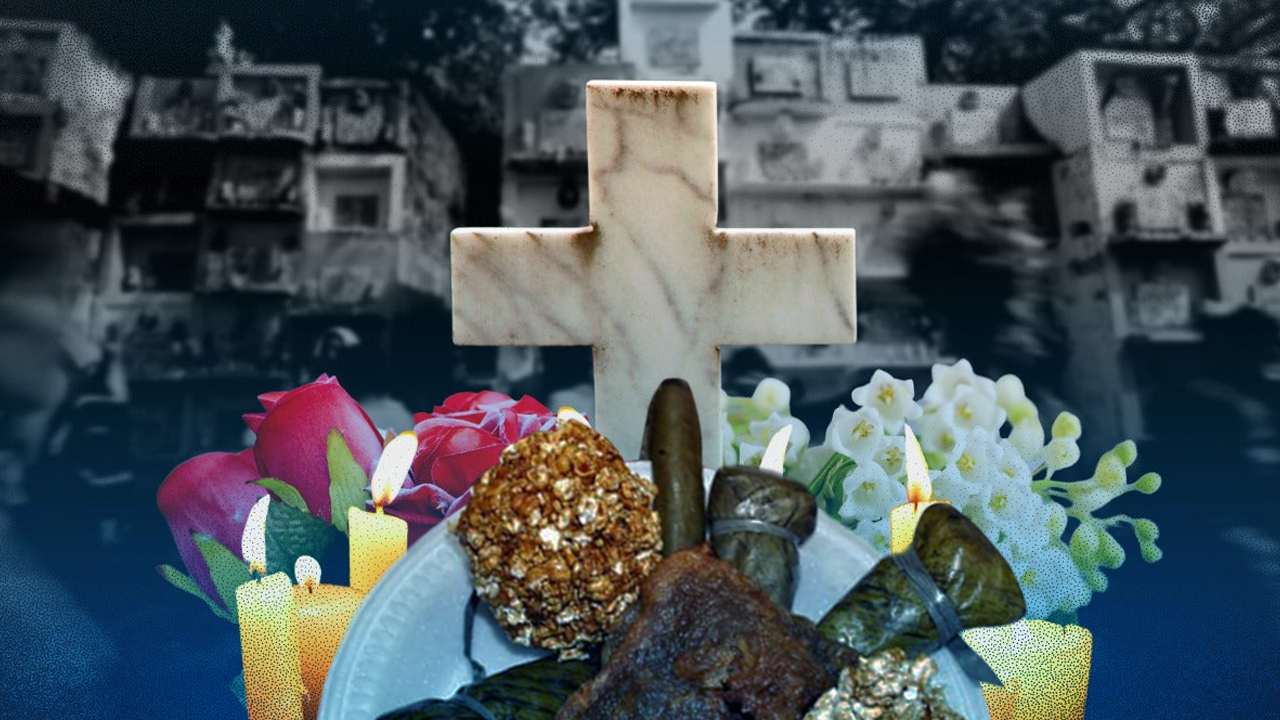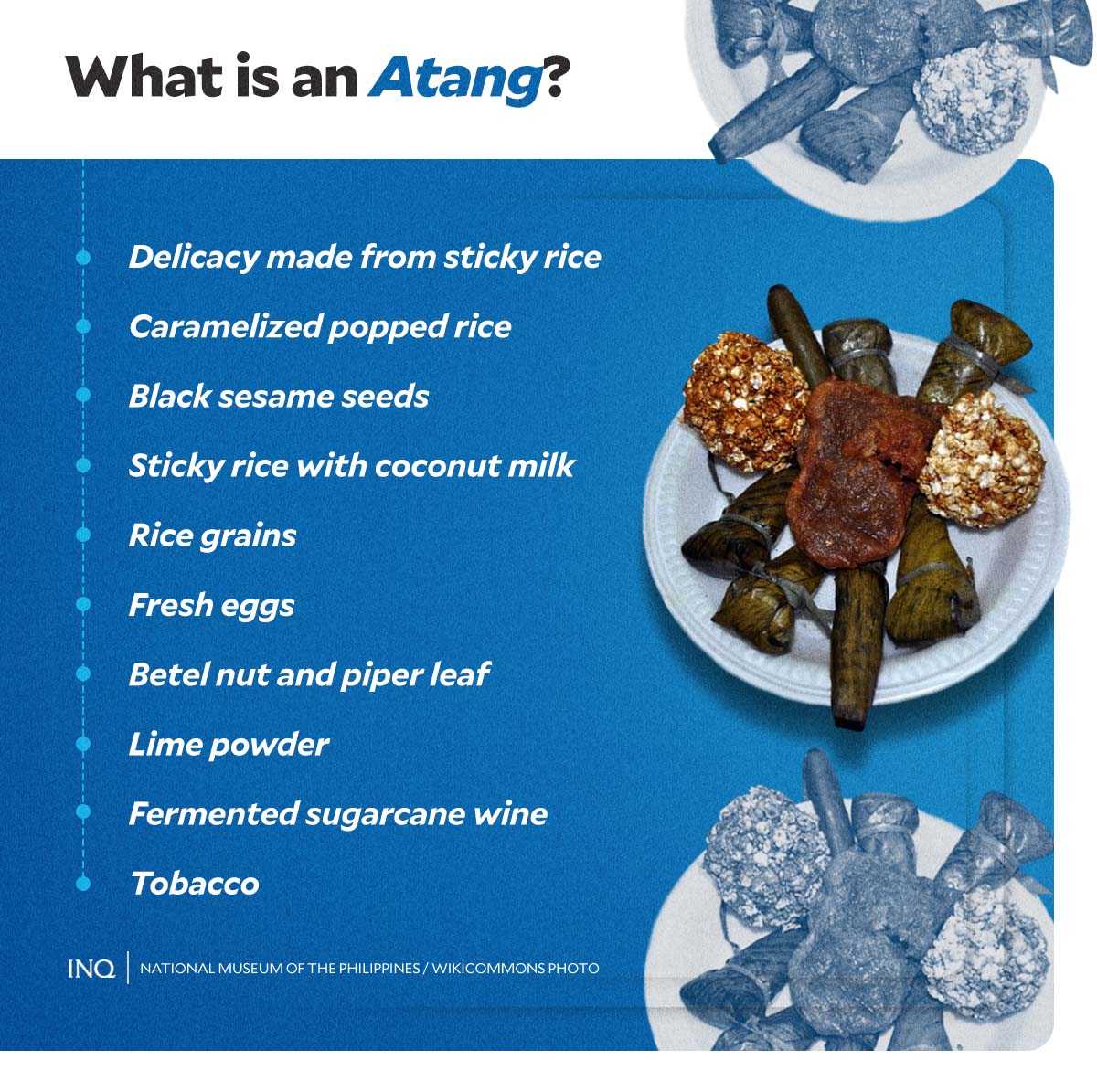Remembering the dead: Understanding atang, why it endures
MANILA, Philippines—Every Undas, millions of Filipinos visit cemeteries to remember the dead—they light candles and bring wreaths of flowers. But in the northern provinces of the Philippines, people offer food, too. They call it atang.
As explained by the National Museum of the Philippines, atang is usually prepared every Undas and on days the dead are remembered—death anniversaries, 40 days after death, and babang-luksa.
It said, however, that this act of offering food for the dead is not exclusive to people in the north as it is also practiced by Tagalogs and Cebuanos, calling it alay and halad, respectively.
Atang consists of delicacies such as suman, dudul, linapet, baduya, patupat or balisongsong (snacks made from sticky rice); busi (caramelized popped rice); linga (black sesame seeds); sticky rice with coconut milk; rice grains; and fresh eggs.
READ: INQToday: Undas 2023: Thousands flock to cemeteries; High chance of rain over PH expected
It may also be accompanied by bua (betel nut) and gawed (piper leaf), apog (lime powder), basi (fermented sugarcane wine), and tabako (tobacco). All of these are offered with prayers for the dead.
Connection between living, dead
As pointed out in a study conducted by Jeff Clyde Corpuz, a senior lecturer of theology and religious education at the De La Salle University, “atang offers an interesting similarity between the Dia de los Muertos in Mexico.”
READ: All Souls’ Day: Why do we pray for the dead?
It is like the veneration of ancestors in China, Japan, Thailand, and Vietnam, too.
Corpuz stated in “Death and Food Offering: The Ilocano ‘Atang’ Ritual from a Contextual Theology” that “the essence of atang is the claim that there is communication between the living and the dead.”
He said the result of the study indicated that 86 percent, or most of the respondents, who are Ilocanos, remember the dead as a significant element in practicing atang and regard such acts as the most significant element.
“They claimed that atang maintains a tradition of remembering the dead; it is an expression of gratitude; it provides comfort to the loved ones; it provides a sense of personal satisfaction,” Corpuz said.
READ: Dying poor: Endless emotional, financial agony for families
Likewise, he pointed out that based on the survey result, people practice atang as it shows respect to the dead by providing food; and it honors the dead. Some respondents also asserted that they do the atang to ask for favors.
For Corpuz, the atang is a form of remembering the dead and can serve as a model of the doctrine of the communion of saints, saying that it is linked with the notion of memorializing the dead and providing for their continued comfort after death.


